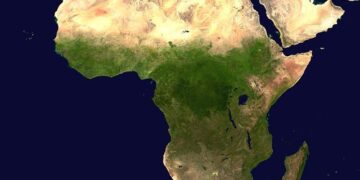New Insights into Afromontane Grasslands: Unveiling Plant Traits and Ecological Data from Maloti-Drakensberg, South Africa
A groundbreaking study has shed fresh light on the rich biodiversity of the Afromontane grasslands in the Maloti-Drakensberg region of South Africa. By meticulously cataloging plant traits alongside key ecological data, researchers aim to deepen understanding of these high-altitude ecosystems that are vital for regional climate regulation and biodiversity conservation. The findings, recently published in Nature, not only provide a comprehensive resource for ecologists but also underscore the importance of preserving these unique grasslands amid mounting environmental pressures.
Plant Traits Reveal Adaptations to Harsh Afromontane Grassland Conditions
Plants thriving in the Maloti-Drakensberg region have evolved distinct morphological and physiological traits that enable them to withstand the extreme conditions of Afromontane grasslands. Adaptations such as thickened leaf cuticles, reduced leaf surface area, and deep root systems are prevalent, facilitating survival in nutrient-poor soils and fluctuating temperatures. These traits minimize water loss, optimize nutrient uptake, and provide resistance against grazing pressure and frequent frost, underscoring the resilience of the native flora in this mountainous ecosystem.
Notable patterns emerge when analyzing the functional traits associated with ecological roles in these grasslands. For example:
- High leaf dry matter content: Indicates investment in leaf toughness and longevity
- Low specific leaf area: Reflects adaptation to reduce water loss and enhance photosynthetic efficiency under stress
- Increased root biomass allocation: Supports nutrient acquisition in shallow, acidic soils
| Trait | Functional Significance | Observed Range |
|---|---|---|
| Leaf Thickness (mm) | Desiccation resistance | 0.2 – 1.1 |
| Specific Leaf Area (cm²/g) | Water-use efficiency | 5 – 15 |
| Root:Shoot Ratio | Resource allocation | 0.8 – 2.5 |
Ecological Data Highlights Biodiversity and Climate Resilience in Maloti Drakensberg
Recent ecological data from the Afromontane grasslands of the Maloti-Drakensberg region reveal a remarkable diversity of plant traits that play a critical role in supporting ecosystem resilience amid changing climatic conditions. These grasslands are characterized by a complex interplay of species exhibiting traits such as drought tolerance, nutrient use efficiency, and adaptive growth forms, which collectively enhance their ability to withstand environmental stressors. Researchers identified key functional traits that not only promote species survival but also drive critical ecosystem services including carbon sequestration, soil stabilization, and water regulation.
The findings highlight several important plant characteristics that underpin ecological robustness:
- Leaf morphology: Variations in leaf size and thickness contribute to moisture retention and photosynthetic efficiency.
- Root architecture: Deep and fibrous root systems improve water uptake during prolonged dry spells.
- Growth patterns: Seasonal growth adjustments facilitate nutrient cycling and regeneration after disturbance events.
| Trait | Adaptive Benefit | Observed Frequency (%) |
|---|---|---|
| Leaf Thickness | Water Conservation | 78 |
| Deep Roots | Drought Resistance | 65 |
| Rapid Regrowth | Fire Recovery | 53 |
Experts Recommend Conservation Strategies to Protect Fragile Grassland Ecosystems
Conservationists emphasize the urgency of implementing adaptive management practices tailored to the unique conditions of the Afromontane grasslands. Strategies such as controlled grazing, fire management, and invasive species removal are considered critical to maintaining the delicate balance of these ecosystems. Experts highlight that monitoring key plant traits-including growth rates, reproductive cycles, and drought tolerance-can provide valuable insights into ecosystem health and resilience. This data-driven approach enables stakeholders to anticipate changes and mitigate adverse impacts caused by climate variability or human activity.
Collaborative efforts between local communities, scientists, and policymakers are essential for the success of these conservation initiatives. The integration of traditional ecological knowledge with modern scientific findings fosters sustainable land use and promotes biodiversity preservation. Key recommendations include:
- Establishing protected zones to safeguard endemic species and fragile habitats.
- Promoting native flora restoration to enhance ecosystem services like soil stabilization and carbon sequestration.
- Developing long-term ecological monitoring programs to track shifts in plant communities and environmental stressors.
| Plant Trait | Ecological Role | Conservation Priority |
|---|---|---|
| Deep Root Systems | Enhance soil moisture retention | High |
| Flowering Phenology | Supports pollinator networks | Medium |
| Drought Tolerance | Increases ecosystem resilience | High |
Insights and Conclusions
The comprehensive dataset on plant traits and ecological characteristics from the Afromontane grasslands of the Maloti-Drakensberg offers valuable insights into one of South Africa’s most unique and biodiverse ecosystems. By shedding light on species adaptations and community dynamics, this research not only enriches our understanding of these high-altitude grasslands but also provides a crucial foundation for conservation efforts amid changing climatic conditions. As the data becomes increasingly accessible to scientists and policymakers alike, it sets the stage for informed strategies aimed at preserving the ecological integrity of the Maloti-Drakensberg region for future generations.































